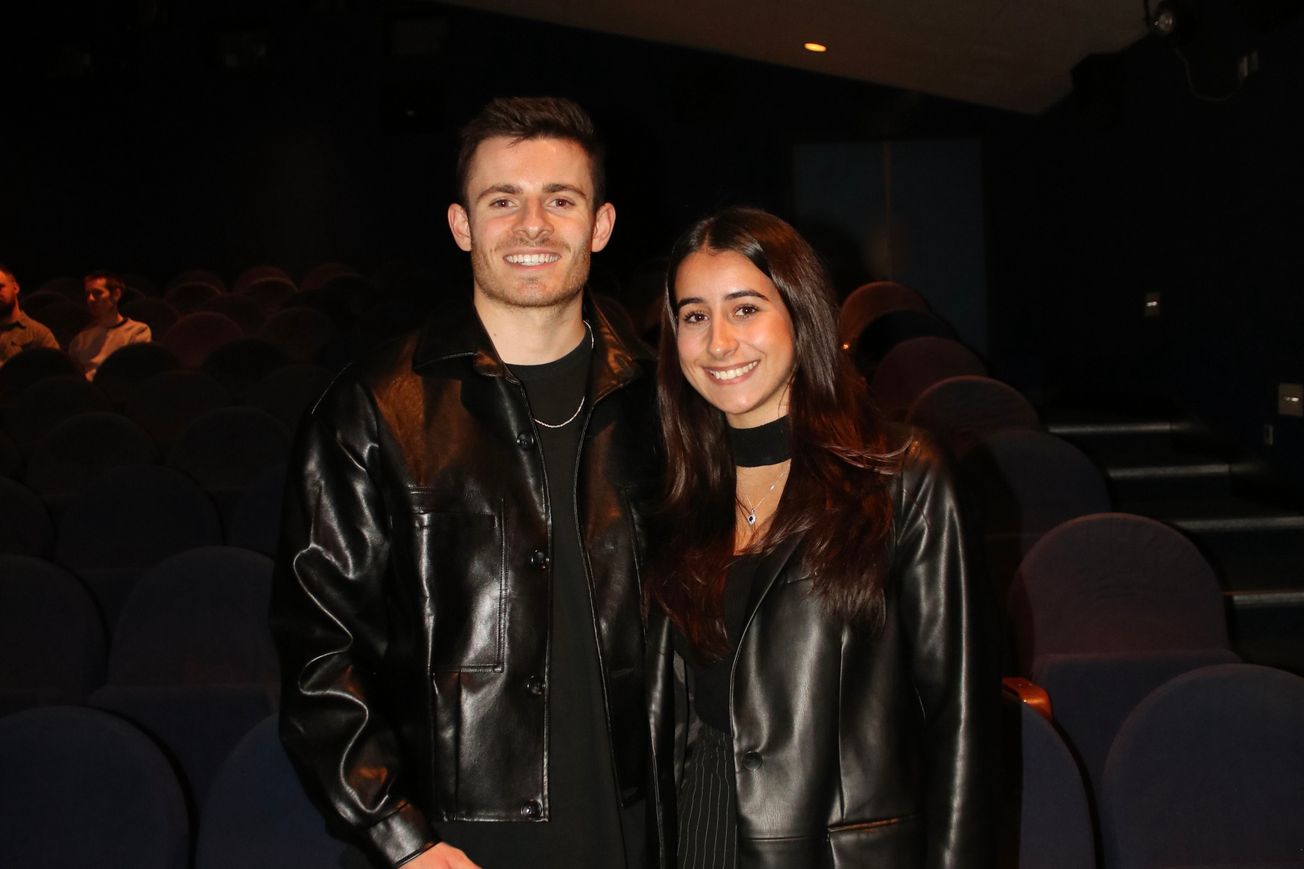By Evelyn Heis, Film & TV Editor
It’s not often that you come across a work that details the Latin experience, let alone a film about the life of a Latinx immigrant who is living in the UK. Suddenly, I felt like my life had been put under a magnifying glass. When I came across Harry Richards’ Santi, a ten-minute short that captures the cultural alienation felt by a Colombian man who recently moved to London, my heart skipped a beat.
Santi is one of the only films I’ve come across that showcases the voices of Colombian immigrants living in the UK. Integrating not only his own experience, having spent six months abroad as a modern languages student, but also that of his Colombian colleagues, Richards’ Santi tells a story that is very much universal.
Whether you’ve lived in another country as an English speaker or moved to a city away from home, Santi effortlessly captures the anxieties surrounding that coming-of-age uprooting and cultural displacement. No matter your background, it makes you feel seen.
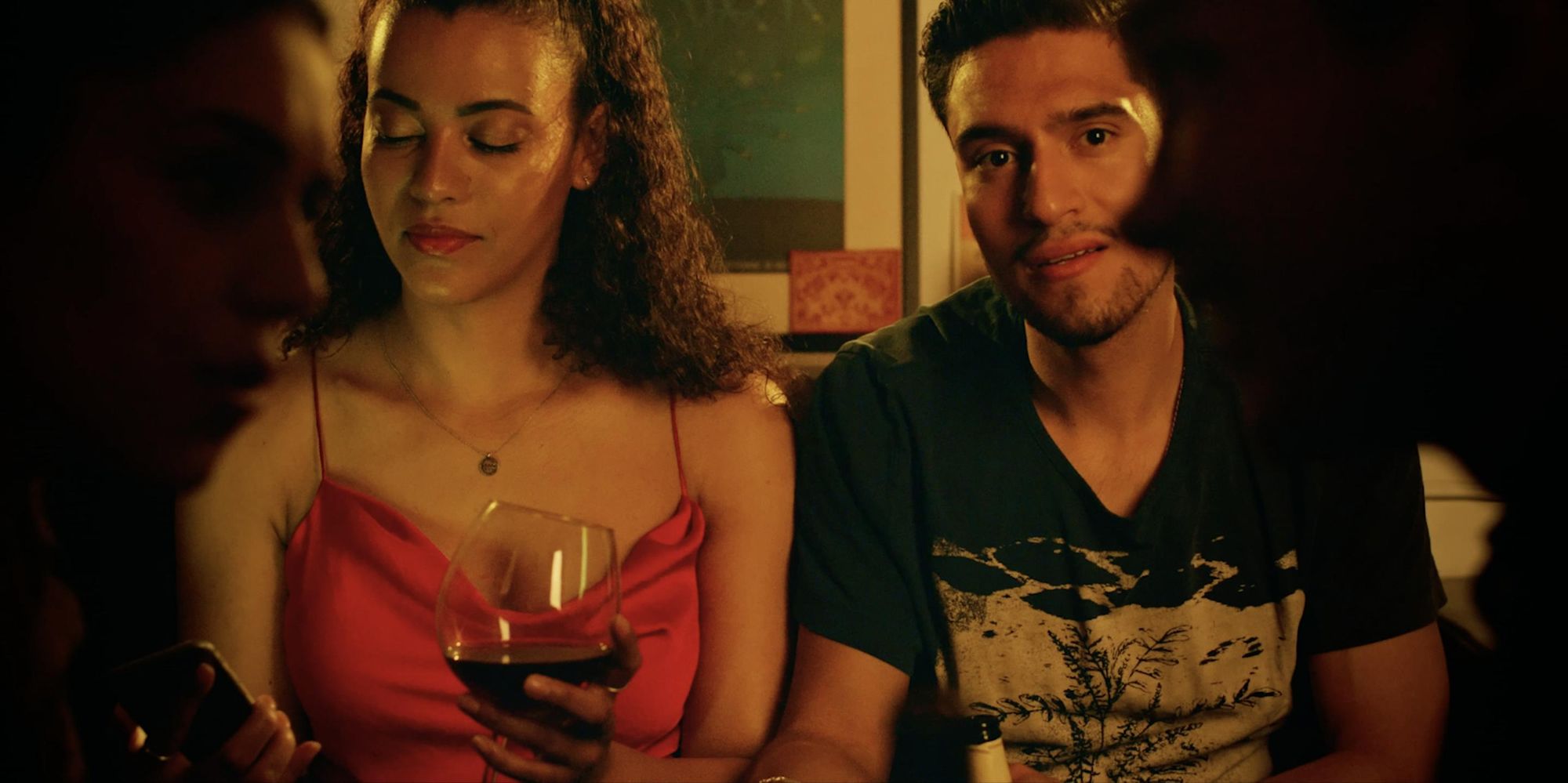
Taking place at a tightly-packed dinner party in London, our leading man Santi (Jon Gutierrez) finds himself in a room full of people he doesn’t know, who also happen to be his girlfriend Violet’s (Zulekha Chaka) close friends. Having recently moved to London from a rural village in Colombia named Ocaña, Santi’s unfamiliarity with British customs, humour, and the flat’s lavish setting is nothing if not a source of great anxiety, and, arguably, insecurity.
Despite his particular circumstance, Santi is not met with sympathy or warm gestures that would make him feel welcome at the hands of the dinner party guests. Depicted through an array of close-knit, claustrophobic shots, overlapping dialogue, and uncomfortable conversations infused with microaggressions and drug-related stereotypes, Santi is made to feel like an outsider, his only comfort being the incoming voice call from his family back home.
Richards’ ten-minute short only provides us with a tiny glimpse into Santi’s life, bringing the film to a close with the relief he feels as he listens to the voices of his family back home. In many ways, we too, as viewers, share that relief with him, emulating the happiness and warmth that fills Santi when he is removed from that alienating environment.

It’s safe to say that the ten-minute short leaves you wanting more; my mind was racing with countless questions surrounding Santi’s upbringing, his relationship, his new British life, and what the future had in store for him. Unlike many other films that leave you unsatisfied, the best part about this project is that this is not the end of Santi’s story.
All of our questions will be answered in due time, for Richards and the rest of the production team are set to adapt this initial concept into a 90-minute feature film next year, which will be set in Colombia and the UK simultaneously.
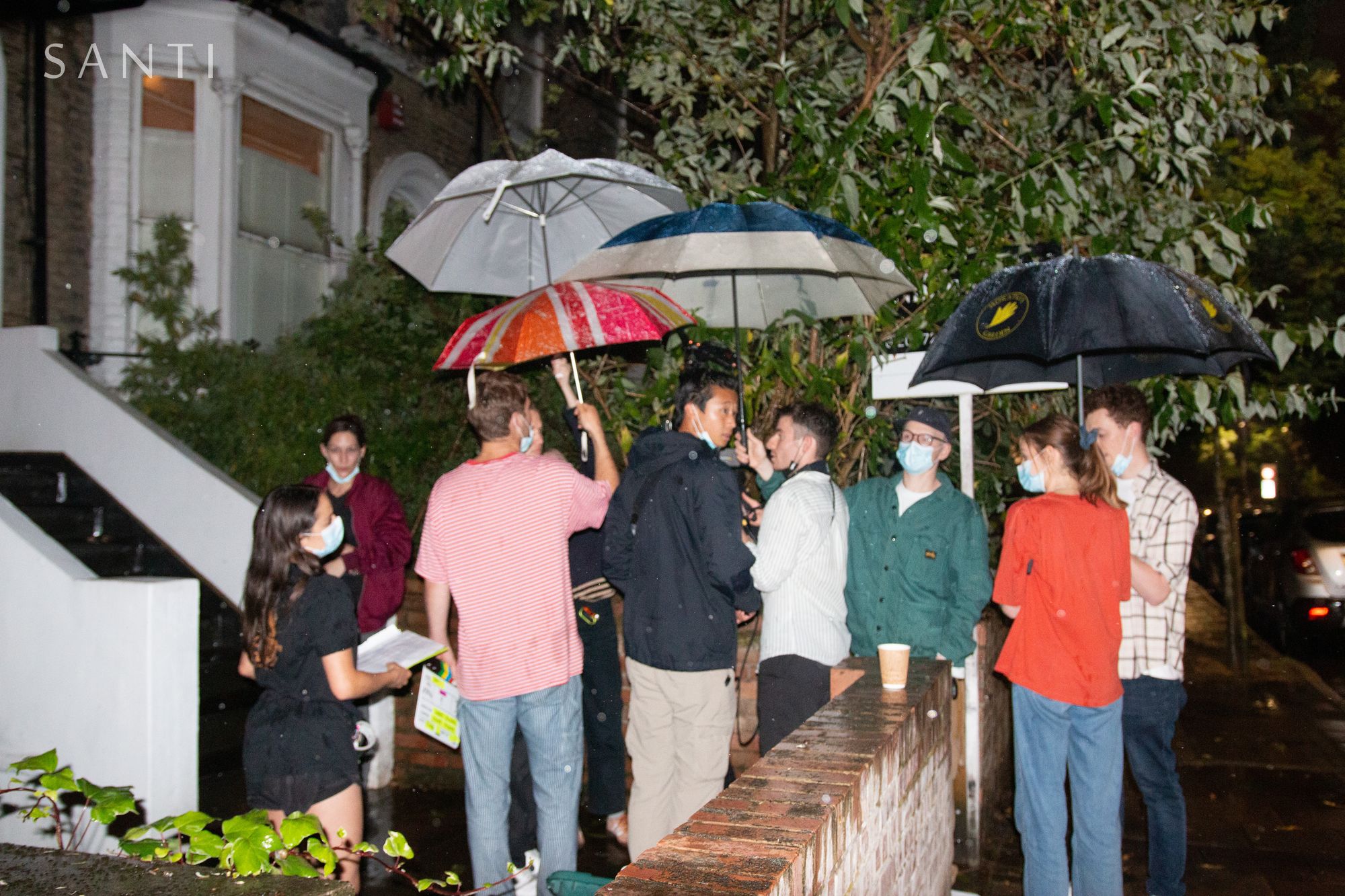
Santi is a project that aims to bridge the gap between these two cultures, certainly bringing to light the conversation about the UK’s treatment of newcomers and how this cultural alienation makes others feel.
This is a project close to Richards’ heart, but also one that is closely informed by Colombians themselves, with a lot of the script and storyboarding for Santi having gone through Colombian communities in London who provided feedback and fed their own experiences into the narrative.
This is indeed a project for the people, whereby, 7.5% of Santi’s initial budget was donated to Latin Elephant, a London-based charity that promotes the inclusion of migrant and ethnic groups in urban regeneration.
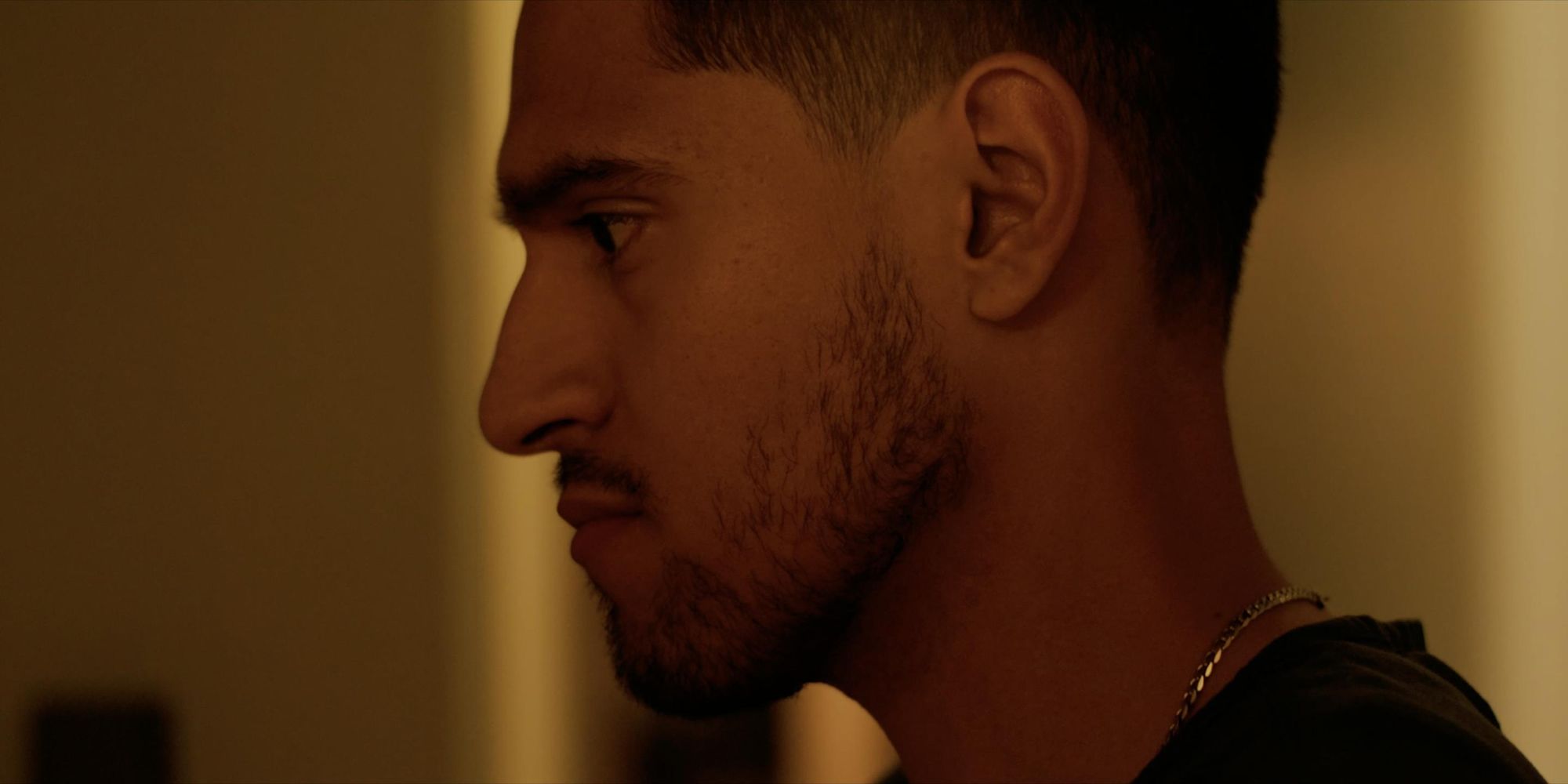
As part of the preparation for next year’s filming, Harry Richards has been touring different universities across the UK, aiming to raise awareness of the project and to get to know the people it’s reaching out to. His university tour, involving the film screening and a live Q&A, allows him to converse with film buffs and Latin American societies.
The screening I was fortunate enough to attend last Wednesday at the Watershed was hosted by Bristol’s up-and-coming arts society, Bristol Collaborative Arts (BCA), who were in collaboration with UOB’S Latino Society. This was BCA’s first event as a society, inviting Richards to share his journey as a filmmaker, and what a monumental first event it was!
As well as attending BCA’s event, I had the pleasure of meeting Harry Richards, where I was able to converse with him about his film’s impact, his future vision, and to learn more about Santi as a project.
I’ve also embedded some of the transcripts from BCA's event’s Q&A to provide further context.
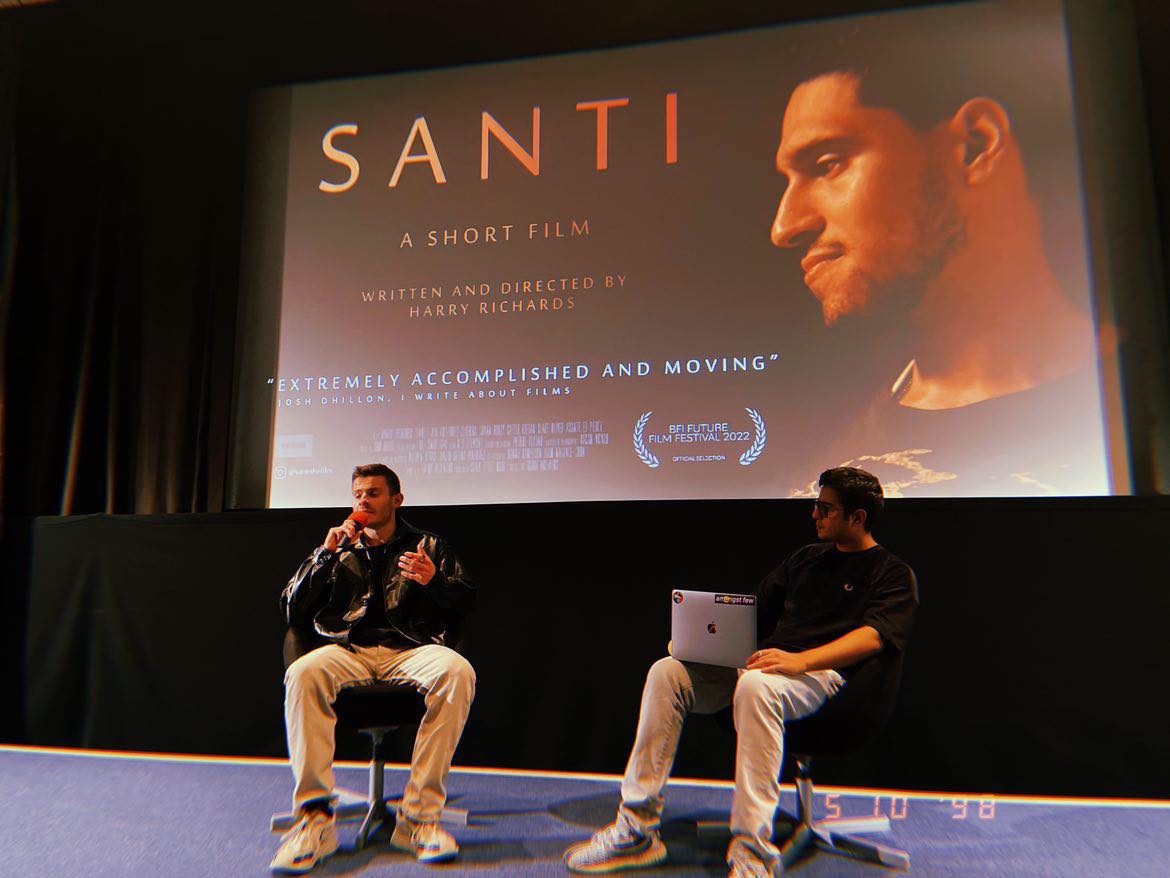
BCA: What drove you to make this project? What’s the story behind the film?
Harry Richards: I studied Spanish and History at the University of Edinburgh, and in my third year, I decided to go to South America. I went to Colombia for 6 months and then to Mexico City for another 6 months. During those first six months, even though I found that it was exciting as I had done lots of travelling, I really struggled to understand the local customs and the culture. I really struggled to connect with the people out there initially.
I think a lot of that came down to the language and the humour. So I found it to be quite isolating for the first four to six weeks. But you know, eventually, I found my friends and got on board with the Colombian community.
What I discovered when I came back to the UK is that many of my friends who had done a year abroad had had a similar experience. Actually, many people who had lived abroad or travelled abroad had also experienced a similar thing when moving to a new place for the first time. So then, I spoke to two of my Colombian friends who had moved to London in March 2020, and our experience was so similar in terms of that universal feeling of isolation, that I decided it would be a good idea to start writing some words about it and to see if I could develop it into a feature film.
Both of my Colombian friends came on board as executive producers, and I wrote the script, which they fed their own experiences into, and they would check it to ensure that it was an authentic representation of a Colombian person’s experience. What then happened, instead of trying to make a 90-minute film straight away, which is obviously incredibly hard and requires you to raise a lot of financing for that, we decided we were going to take a 10-minute piece from the film and basically use that to convince prospective investors that there’s an audience and an appetite for this story.
BCA: In the media right now, a lot of the films and television that talk about Colombia focus on drugs and violence. With Santi, it focuses, instead, on cultural alienation and the art of peer pressure. How important was it to you to make sure that Santi sheds a different light on the traditional depiction of Latin culture in Western media?
HR: It was really important for us. Obviously, there is a representation, as you said, that, unfortunately, due to shows like Narcos, this country has been plagued with drug violence. Of course, that is an element of Colombian culture and its history, but what I discovered when I announced I was going out there, is that that’s all everyone would mention to me.
But, actually, when I got there, I realised that there were so many incredibly beautiful things about this country, from the landscapes to the sense of family and the community, that really resonated with me. These were things that were unrepresented in Film and TV.
I think, then, what I wanted to show in this film is that feeling of family and that homesickness that you can feel when you’re away from home: that warmth inside that you feel when you hear your family’s voices is universal. For me, when I was in Colombia, my family’s voices were a comfort, and I think that’s something that is really important anywhere. The sense of community in Colombia is something that inspired me to represent it more appropriately.
Evelyn Heis: How do you feel about the existing representation of the Latinx community in Film and Television? You mentioned a bit about it briefly in the Q&A, with shows like Narcos directly impacting and overshadowing Colombian identities, but how do you feel about the representation that the whole community has at the moment?
HR: I think that there is some level of representation in the Latinx community, which is fantastic, but I think, perhaps, what is missing and what we wanted to hone in on with Santi, is to really show and to break down what it means to be Latinx. Instead of it being a Latinx actor and us sort of putting together in our heads all of these Latin American countries as the same type of person, it’s really trying to showcase and establish what it means to be a Colombian person.
To go even one step further, Santi is showing what it means to be a person from Ocaña, a small town in the North East of Colombia, in el Norte de Santander. With that specificity, we actually hope that we’ll be able to connect with more people, by trying to be as authentic as possible and really understand a particular character in a particular family. I think that’s when we will connect with the Colombian community because they’ll actually see themselves represented on screen in the best light.
EH: In trying to showcase just one Latin American experience, the Colombian experience, did you make Santi with the hopes that it would encourage people who connected with Santi to also share their experiences? Were you hoping to inspire other Latinos to share their Latin experience in the UK?
HR: Absolutely. That is something that has been an integral part of why I wanted to do this university tour. I wanted to connect with Latin American communities around the country, because the tour is being built by film societies, but also Latin American societies. We really wanted to, firstly, connect with Latin Americans that might have shared an experience with Santi, and open up a space for discussion around the subject. What has been really beautiful so far is having had the opportunity to do that.
Particularly in the London screenings, there were very diverse audiences that we were connecting with; all of the different Latin American students that came along often shared their own experiences with homesickness, comfort calls from home, and isolation. It’s been really beautiful, and I think that goes beyond Latin Americans, as well. We found that international students from other countries have also related. I think, as students, this is the prime age for that, when people are moving, or have made the decision to study in a different country; we’ve engaged and spoken to so many different students that have shared their experiences with feeling out of place, and at odds with the British culture when first moving here.
EH: Would you say that the ‘Latin American in the UK’ experience is something that you’re looking to explore continuously in your work? Or would you say this project is just depicting your experience of living in Colombia?
HR: I think [my experience] is quite specific to this film. It’s something I’m very passionate about, but I think, naturally, there are other parts of my own life experience and family that I would like to delve into in my future career. While I hope this film opens up an opportunity and really helps to establish a network of Latin American filmmakers, and bridge the gap between the UK and Colombia, I think there are lots of Latin American stories that can be told by Latin American filmmakers and writers. I’d like Santi to make my mark, but ultimately, I would like to see Latin-American filmmakers add to the conversation.
EH: Other than your upcoming feature film, which I’m sure is taking up a lot of your time right now, do you have any other projects, or ideas for future films, that you could tell me about?
HR: I don’t know whether I can tell you about them! As of right now, with Santi being turned into a feature film, it’s fantastic to see a short film be turned into a feature. I’m really enjoying learning about what that format means: 90 minutes to 120 minutes on screen is a very large undertaking. Crafting a story of that length requires a lot of different skills for a short film. So, I think in the future, I’d also like to try the mini-series format and build narratives within a 30 to 60-minute episode, thinking more about character arcs and how they can interact throughout their timespan in just six to eight episodes.
For now, I’m really focusing on mastering the 90-minute format- I hope! A glimpse into the future, perhaps, will be a mini-series.
EH: Why do you think it’s important to highlight a regional experience in your work? You’re not trying to represent the whole Latin American community, you’re just representing Colombia; why do you think that specificity is important in a project like Santi?
HR: I don’t think that I deserve to be able to represent the whole of Latin America. I think for anyone to undertake that, it would be incredibly difficult. The beauty of a feature film is that it allows you to really tap into one subject and really focus on it for 90 minutes. For that period of time when you have people sitting in the cinema, they really hone in on one particular theme or story. So, in 90 minutes, I don’t think I would be able to do justice to all the different countries in Latin America. Even the research that that would undertake, I think, also, would ultimately result in amalgamating different cultures together, which shouldn’t be done that way.
EH: You mentioned in passing that ‘Santi’ is quite an easy name to pronounce. That made me wonder whether you are focusing on making a film that is palatable for a Western and British audience, for someone who may not have prior knowledge of the Colombian community, or whether you are trying to make a film more for Colombian people to see themselves represented on screen and made to feel at home?
HR: I think, actually, it’s for both. It’s for both audiences. Something that’s been integral to the way we’ve built the film and the project, is that we’ve brought in both Colombian crew members and British crew members. We’re subtitling as well. We have a version that has British subtitles when the Colombian family members are speaking, but then we also have a subtitle track when Colombian people watch the film that will have Spanish subtitles in Colombian Spanish. Those subtitles are being developed by our executive producers and by people from Ocaña as well, to ensure that we are reflecting the Colombian language and experience as close as possible.
What the word ‘Santi’ essentially does is, it’s something that both cultures can say and speak. It’s a word that doesn’t need translating. By having that word there and that name we’re bringing the two audiences together. There are many films that are dubbed in different languages, or are given different titles for the territory they’re distributed in, but for Santi there is no other title we would ever have to give it. We would never want to do that, either. We would never dub the film or retitle it, because it’s something that we hope can reach audiences in Colombia, in the UK and around the world.
EH: Just like Santi’s story is universal, the name itself is also something that can bridge the gap and be universal.
HR: Exactly! :)
Follow @santithefilm on Instagram for more updates.
Featured Image: Harry Richards / The Santi Production
Keep your eyes peeled for the upcoming feature film of Santi, coming later next year!

